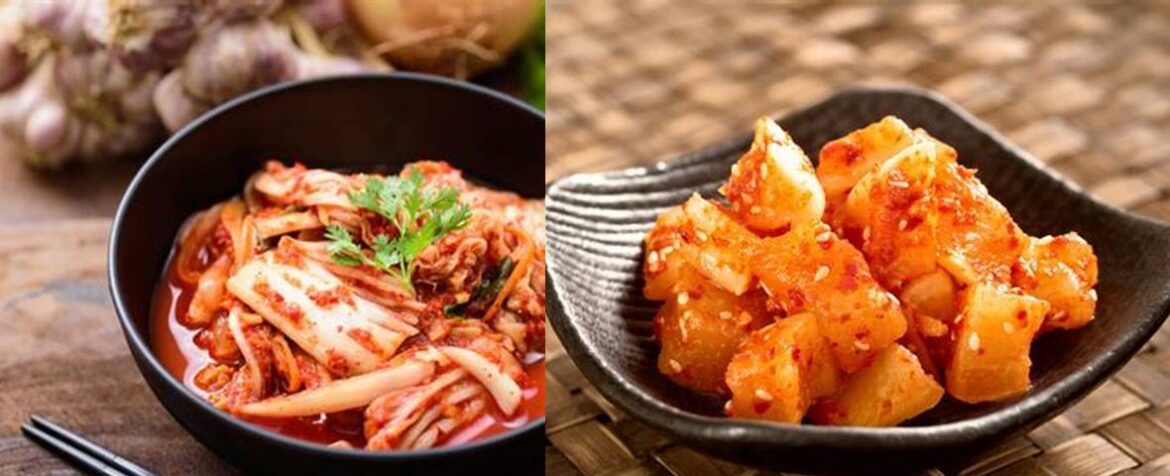Substitute For Kimchi – Craving the tangy, spicy, and umami-packed flavors of kimchi but don’t have any on hand? Don’t fret! We’ve got you covered with a tantalizing array of kimchi substitutes that will satisfy your taste buds and transport you to the vibrant streets of Korea. Whether you’re a kimchi aficionado or simply looking to explore new culinary horizons, this blog post is your ticket to discovering the perfect alternative to this beloved fermented delight. So grab your chopsticks and join us as we embark on a mouthwatering adventure through the world of kimchi substitutes. Get ready to be amazed by the versatility and deliciousness that awaits!
Kimchi: A Culinary Symphony of Fermented Delights
Hailing from the heart of Korea, kimchi is a culinary masterpiece that has tantalized taste buds for centuries. This traditional dish, crafted from fermented cabbage, embodies a captivating blend of spicy and tangy flavors, making it a versatile culinary companion, both as a side dish and an integral ingredient in various recipes. With its myriad variations, each boasting its own unique flavor profile, kimchi stands as a testament to the boundless creativity of Korean cuisine.
Exploring the Depths of Kimchi’s Allure
Kimchi’s captivating charm lies in its intricate fermentation process, a culinary alchemy that transforms humble cabbage into a symphony of flavors. This process, guided by the magic of lactic acid bacteria, imparts a distinctive sourness and a vibrant tang that sets kimchi apart from its culinary counterparts. The addition of various seasonings, such as gochugaru (Korean chili powder), garlic, ginger, and jeotgal (fermented seafood), further elevates kimchi’s flavor profile, creating a complex tapestry of spicy, savory, and umami notes.
The Versatile Culinary Canvas of Kimchi
Kimchi’s versatility extends far beyond its role as a mere condiment. Its distinct flavor profile makes it an indispensable ingredient in a multitude of Korean dishes, adding depth and complexity to soups, stews, and pancakes. Its fiery nature lends itself perfectly to stir-fries, imbuing them with a piquant kick. Kimchi’s fermented goodness also shines in marinades, tenderizing meats and infusing them with its signature tang.
Navigating the Nuances of Kimchi Substitutes
In the absence of kimchi, culinary enthusiasts can explore a world of substitutes that capture its essence while offering their own unique flavor dimensions. Sauerkraut, a German fermented cabbage dish, shares kimchi’s sour and tangy characteristics, making it a suitable replacement. Spicy pickled cucumbers, with their sharp, tangy flavor and a hint of sweetness, also serve as a viable alternative. Pickled radishes, possessing a zesty bite and a tangy, salty flavor, offer a refreshing twist to kimchi-inspired dishes. Gochujang, a Korean condiment crafted from fermented soybeans and red chili peppers, captures kimchi’s spicy and tangy essence, making it an ideal substitute in sauces, marinades, and stews.
Miso Paste: A Japanese Culinary Treasure
Miso paste, a fermented soybean paste originating from Japan, holds its own unique place in the culinary world. Its salty, savory flavor and slightly sticky texture make it a versatile ingredient in Japanese cuisine. Miso paste finds its home in soups, stews, and marinades, imparting a rich, umami-packed flavor. It also excels as a condiment, adding a savory depth to grilled meats and vegetables. To unlock miso paste’s full potential, whisk it into hot water until dissolved, creating a smooth and flavorful paste. Experimentation with different proportions of miso paste and water allows for a fine-tuning of flavors, ensuring a harmonious balance in each culinary creation.
FAQ about Substitute For Kimchi
Q: What is kimchi?
A: Kimchi is a traditional Korean dish made from fermented cabbage, known for its spicy and tangy flavors.
Q: How long has kimchi been enjoyed?
A: Kimchi has been enjoyed for centuries and is considered a culinary masterpiece in Korea.
Q: Can kimchi be used as a side dish?
A: Yes, kimchi is commonly served as a side dish and can complement a variety of meals.
Q: Can kimchi be used as an ingredient in recipes?
A: Absolutely! Kimchi can be used as an integral ingredient in various recipes, adding its unique flavor profile to dishes.
Q: Are there different variations of kimchi?
A: Yes, there are numerous variations of kimchi, each with its own distinct flavor profile, showcasing the creativity of Korean cuisine.
Q: What flavors can be found in kimchi?
A: Kimchi offers a complex tapestry of flavors, including spicy, savory, and umami notes, creating a truly unique taste experience.


